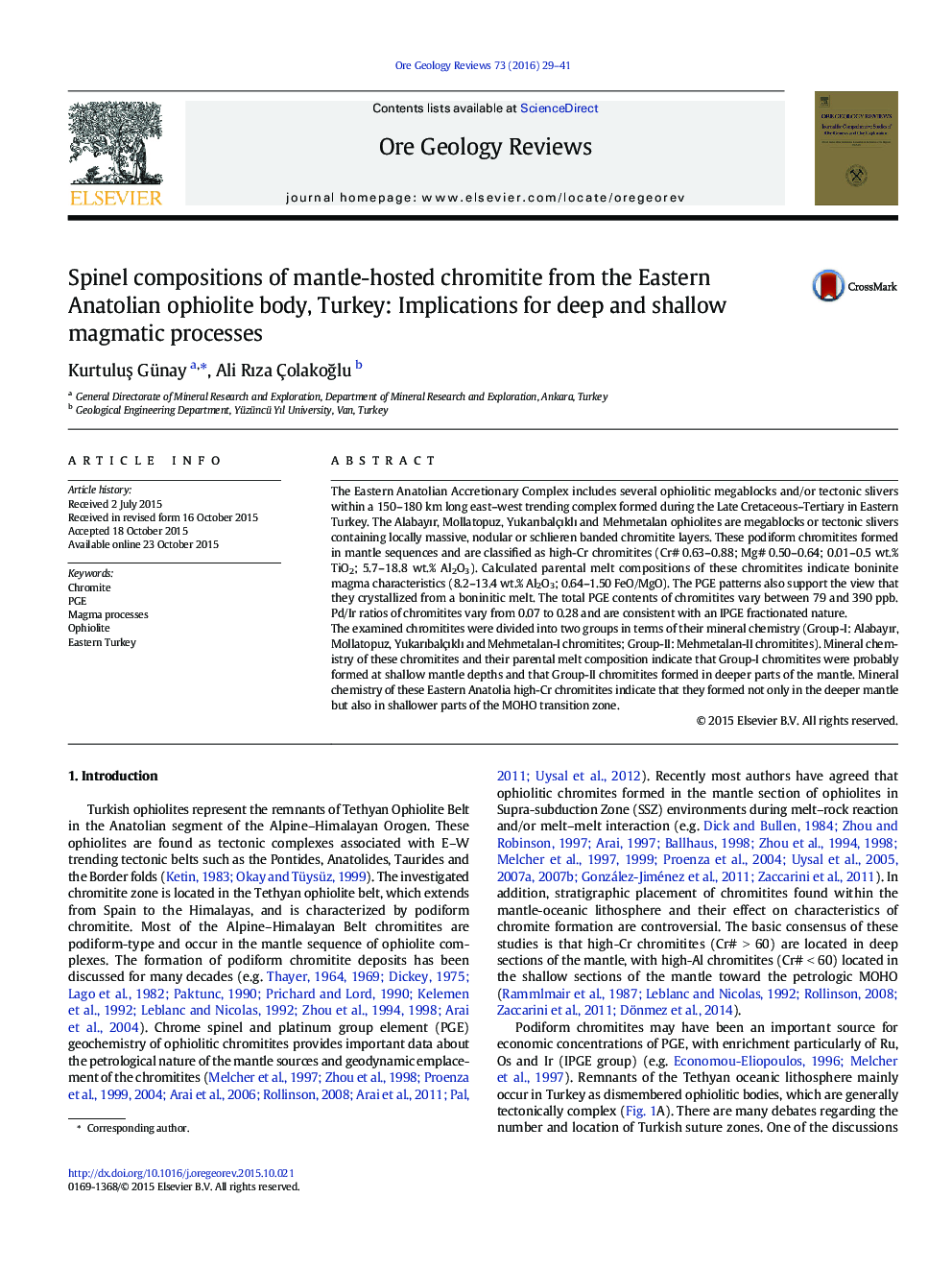| کد مقاله | کد نشریه | سال انتشار | مقاله انگلیسی | نسخه تمام متن |
|---|---|---|---|---|
| 6435867 | 1351862 | 2016 | 13 صفحه PDF | دانلود رایگان |
- The present study reports the first systematic investigation of chromite composition and PGE data from four different chromitite deposits hosted in the Eastern Anatolian Accretionary Complex.
- The studied chromitites were divided into two groups and their mineral chemistry indicates that they are high-Cr chromitites. Calculated parental melt composition of Group-I and Group-II chromitites shows that they formed from boninitic magma. Mineral chemistry and parental melt compositions of the studied chromitites have showns that they formed in different environments. While Group-II chromitites formed in deeper parts of the mantle environment, Group-I chromitites formed in shallow parts of the mantle at or near the MOHO transition zone. PGE abundance is characteristic of the IPGE group and similar to podiform chromitite in ophiolitic terranes.
The Eastern Anatolian Accretionary Complex includes several ophiolitic megablocks and/or tectonic slivers within a 150-180 km long east-west trending complex formed during the Late Cretaceous-Tertiary in Eastern Turkey. The Alabayır, Mollatopuz, Yukarıbalçıklı and Mehmetalan ophiolites are megablocks or tectonic slivers containing locally massive, nodular or schlieren banded chromitite layers. These podiform chromitites formed in mantle sequences and are classified as high-Cr chromitites (Cr# 0.63-0.88; Mg# 0.50-0.64; 0.01-0.5 wt.% TiO2; 5.7-18.8 wt.% Al2O3). Calculated parental melt compositions of these chromitites indicate boninite magma characteristics (8.2-13.4 wt.% Al2O3; 0.64-1.50 FeO/MgO). The PGE patterns also support the view that they crystallized from a boninitic melt. The total PGE contents of chromitites vary between 79 and 390 ppb. Pd/Ir ratios of chromitites vary from 0.07 to 0.28 and are consistent with an IPGE fractionated nature.The examined chromitites were divided into two groups in terms of their mineral chemistry (Group-I: Alabayır, Mollatopuz, Yukarıbalçıklı and Mehmetalan-I chromitites; Group-II: Mehmetalan-II chromitites). Mineral chemistry of these chromitites and their parental melt composition indicate that Group-I chromitites were probably formed at shallow mantle depths and that Group-II chromitites formed in deeper parts of the mantle. Mineral chemistry of these Eastern Anatolia high-Cr chromitites indicate that they formed not only in the deeper mantle but also in shallower parts of the MOHO transition zone.
Journal: Ore Geology Reviews - Volume 73, Part 1, March 2016, Pages 29-41
